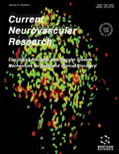
Stroke and Vascular Neurology
Scope & Guideline
Innovating the future of vascular neurology.
Introduction
Aims and Scopes
- Cerebrovascular Disease Mechanisms:
Research exploring the biological and physiological mechanisms underlying various cerebrovascular diseases, including ischaemic stroke, haemorrhagic stroke, and vascular dementia. - Clinical Trials and Therapeutics:
Focus on clinical trials assessing new treatments and therapies for stroke management, including thrombolytics, endovascular procedures, and novel drug therapies. - Epidemiology and Risk Factors:
Studies investigating the epidemiological trends, risk factors, and outcomes associated with stroke and vascular diseases, with a particular emphasis on population-based research. - Rehabilitation and Recovery:
Research on post-stroke rehabilitation strategies and their effectiveness in improving functional recovery and quality of life for stroke survivors. - Technological Advances in Stroke Care:
Exploration of new technologies and methodologies, such as imaging techniques, machine learning, and telemedicine, aimed at enhancing stroke diagnosis and treatment. - Interventional Techniques:
Studies focusing on interventional approaches, including endovascular therapy, angioplasty, and stenting, for managing acute and chronic vascular conditions.
Trending and Emerging
- Personalized Medicine and Genetic Research:
Increasing focus on personalized medicine approaches, including genetic and biomarker studies to tailor treatments for individual patients, is becoming a prominent theme. - Integration of Artificial Intelligence:
Emerging interest in the application of artificial intelligence and machine learning for predictive analytics and enhancing clinical decision-making in stroke care. - Multimodal Treatment Approaches:
A trend towards exploring multimodal treatment strategies that combine pharmacological, surgical, and rehabilitation interventions to optimize stroke outcomes. - Health Disparities and Access to Care:
Growing emphasis on understanding health disparities in stroke care, particularly in access to treatment and outcomes among different demographic groups. - Long-term Outcomes and Quality of Life:
An increasing number of studies focusing on long-term outcomes, including quality of life and cognitive function post-stroke, reflecting a broader understanding of stroke impacts.
Declining or Waning
- Traditional Pharmacological Approaches:
Research focused solely on conventional pharmacological treatments for stroke has seen a decline, as newer, more innovative therapeutic strategies gain attention. - Basic Science Studies:
There is a waning interest in basic science studies that do not translate into clinical applications, as the journal increasingly prioritizes research with direct clinical relevance. - Single-Center Studies:
Publications from single-center studies are becoming less frequent, with a noticeable shift towards multicenter collaborative research that provides broader insights and higher statistical power. - Descriptive Epidemiological Studies:
While epidemiological studies remain important, there is a reduced emphasis on purely descriptive studies without intervention or comparative analyses, as the journal seeks more impactful findings.
Similar Journals

Clinical Neuroradiology
Empowering Professionals with the Latest in Neuroradiology.Clinical Neuroradiology, published by SPRINGER HEIDELBERG, is a leading journal in the fields of neurology and radiology, focusing on the intersection of clinical practice and cutting-edge imaging technologies. With an impressive impact factor and categorized within Q2 in Neurology (clinical) and Q1 in Radiology, Nuclear Medicine and Imaging, this journal is positioned at the forefront of scientific discourse, facilitating high-quality research dissemination from its origins in 2000 through to 2024. Situated in Germany, Clinical Neuroradiology provides a platform for researchers, professionals, and students to explore the latest advancements and insights in neuroimaging, ensuring that its readership remains at the vanguard of clinical practice. While it does not offer open access, the journal remains committed to fostering a vibrant academic community dedicated to enhancing patient care through innovative neuroradiological techniques and findings.

European Stroke Journal
Advancing stroke research for a healthier tomorrow.The European Stroke Journal, published by SAGE Publications Ltd, is a pivotal resource in the domains of Cardiology and Neurology, reflecting its commitment to advancing knowledge and research in these critical areas of medicine. Since its inception in 2016, this journal has rapidly gained recognition, achieving a prestigious Q1 ranking in both Cardiology and Neurology (clinical) as of 2023, placing it among the top quartile publications in these fields. With a prominent position, ranked 65th and 72nd respectively in Scopus for Cardiology and Neurology, the journal caters to a diverse audience of researchers, clinicians, and students dedicated to improving stroke treatment and prevention strategies. Although it operates under a traditional access model, its impactful publications are essential for anyone involved in stroke research, ensuring they remain at the forefront of scientific developments and clinical practices.

Angiologia
Connecting researchers and practitioners in vascular health.Angiologia, published by ARAN EDICIONES, S A, serves as a vital platform for the dissemination of research and advancements in the fields of cardiology and cardiovascular medicine. Established in 1949, this Spanish journal has made significant contributions to understanding vascular health, although it currently holds a Q4 status in Scopus rankings, indicating a critical opportunity for emerging researchers to contribute to this evolving field. Spanning from 1949 to 1993 and resuming from 1996 to 2024, the journal reflects a rich history of academic discourse. With its ISSN 0003-3170 and E-ISSN 1695-2987, Angiologia is committed to enhancing the visibility of cardiovascular research, providing access to a diverse range of articles that cater to the needs of healthcare professionals, academics, and students aiming to deepen their understanding of angiological health. While the journal currently does not offer open access options, it remains significant in guiding future research and fostering innovations within the cardiology landscape.

Vascular and Endovascular Surgery
Leading the Way in Cardiovascular InnovationsVascular and Endovascular Surgery is a distinguished peer-reviewed journal dedicated to the advancements and innovations in the field of vascular and endovascular medicine. Published by SAGE Publications Inc, this journal serves as a vital platform for clinicians, researchers, and students keen to explore cutting-edge practices, surgical techniques, and emerging therapies within cardiovascular medicine. With an ISSN of 1538-5744 and an E-ISSN of 1938-9116, it has established a solid reputation since its inception, covering articles from its founding years in 1967 to its continuous releases up to 2024. The journal currently holds a Q3 quartile ranking in the categories of Cardiology and Cardiovascular Medicine and Surgery, highlighting its significance within the academic community. Although it is not an open-access journal, it offers valuable content that supports evidence-based practice and clinical decisions in vascular and endovascular procedures. By embracing multidisciplinary collaboration and fostering innovation, Vascular and Endovascular Surgery remains a critical resource for those invested in enhancing patient outcomes and advancing surgical methodologies.

JOURNAL OF THE NEUROLOGICAL SCIENCES
Connecting theory and practice in the realm of neurological health.JOURNAL OF THE NEUROLOGICAL SCIENCES, published by Elsevier, is a leading academic journal that has been at the forefront of neurology research since its inception in 1964. With a robust scope covering both clinical and experimental neurological sciences, this journal serves as an invaluable resource for researchers, practitioners, and students in the field. The journal is indexed with an impressive Q2 ranking in Neurology and a remarkable Q1 status in Clinical Neurology as of 2023, reflecting its high impact and relevance in the medical community. The journal's Scopus rankings further emphasize its significance, holding the 69th position in clinical neurology and 35th in neuroscience, marking it in the top 82nd percentile of its peers. While the journal operates under a traditional subscription model, it continues to offer a platform for groundbreaking research and comprehensive reviews that advance our understanding of neurological disorders. Researchers and clinicians alike will find the JOURNAL OF THE NEUROLOGICAL SCIENCES an essential contribution to the literature, paving the way for innovations in clinical practices and therapeutic strategies.

Vascular Health and Risk Management
Fostering collaboration to enhance vascular health understanding.Vascular Health and Risk Management is a leading peer-reviewed journal published by DOVE MEDICAL PRESS LTD, focusing on the critical areas of cardiology, endocrinology, and public health. With an impact factor that reflects its significance within the scientific community, this Open Access journal, established in 2005, has been committed to enhancing knowledge on the interplay between vascular health and various risk factors affecting patient outcomes. The journal is proudly based in New Zealand and is indexed across multiple categories, maintaining a prominent Q2 ranking in cardiology, endocrinology, diabetes, and several other medical disciplines as of 2023. By providing a platform for innovative research and comprehensive reviews, Vascular Health and Risk Management seeks to foster collaboration among healthcare professionals, enhance clinical practices, and ultimately improve patient care through rigorous scientific inquiry and disseminated knowledge. Researchers, professionals, and students will find invaluable insights that inform their work and advance the understanding of vascular-related health issues.

CURRENT NEUROVASCULAR RESEARCH
Fostering Academic Discourse in Neurovascular StudiesCURRENT NEUROVASCULAR RESEARCH is an esteemed peer-reviewed journal published by Bentham Science Publishers Ltd, focusing on the intricate relationships within the realms of cellular and molecular neuroscience, developmental neuroscience, and neurology. With an ISSN of 1567-2026 and an E-ISSN of 1875-5739, this journal has been contributing to the field since its inception in 2004 and is poised to continue through 2024. As a resource dedicated to disseminating innovative research findings, CURRENT NEUROVASCULAR RESEARCH is recognized within Category Quartiles as Q3 in multiple fields, including Neurology (clinical) and Developmental Neuroscience. Although classified in the Q4 category for Cellular and Molecular Neuroscience, the journal maintains a crucial role in fostering academic discourse and advancing our understanding of neurovascular dynamics. Researchers, professionals, and students will find valuable insights in this journal, offering access to a diverse range of studies that highlight cutting-edge developments in the field.

EUROPEAN JOURNAL OF NEUROLOGY
Exploring Breakthroughs in Clinical Neurology.EUROPEAN JOURNAL OF NEUROLOGY, published by WILEY, stands as a leading platform for the dissemination of innovative research and clinical developments in the field of neurology. With a robust impact factor and prestigious rankings, including being positioned as Q1 in both Neurology and Clinical Neurology categories, the journal plays a pivotal role in shaping neurological sciences from 1994 to 2024. Its Scopus rank highlights its importance, being in the 88th percentile for clinical neurology and 87th percentile for neuroscience. Located in the United Kingdom, the journal thrives as a vital resource for researchers, clinicians, and students dedicated to improving neurological health outcomes. Although it does not offer Open Access, its subscription-based model ensures high-quality peer-reviewed articles are accessible to a global audience, reflecting the continuous pursuit of excellence in neurological research and patient care.

Cerebrovascular Diseases Extra
Connecting Academics and Clinicians for Better OutcomesCerebrovascular Diseases Extra is a distinguished open-access journal published by KARGER, operating out of Switzerland since 2011. With ISSN 1664-5456, this journal aims to bridge the gap in knowledge surrounding cerebrovascular diseases, an essential segment of both Cardiology and Cardiovascular Medicine as well as Neurology. Ranked in the third quartile by Scopus for various categories, including Cardiology, Neurology, and Clinical Neurology, it is specially designed for academics, clinicians, and researchers who seek to disseminate and gain insights into the latest advancements and research findings in these critical areas. By embracing open access, it amplifies the reach and impact of its published research, ensuring that vital information is readily accessible to a global audience. As the journal converges towards its targeted years from 2015 to 2024, it remains a pivotal platform for fostering innovative ideas and collaborative research in cerebrovascular health.

International Journal of Stroke
Advancing Stroke Research for a Healthier TomorrowThe International Journal of Stroke, published by SAGE PUBLICATIONS LTD, is a leading peer-reviewed journal dedicated to advancing the field of stroke research and clinical practice. Established with a commitment to disseminating high-quality scholarly articles, this journal has rapidly progressed to achieve a prestigious Q1 ranking in both Neurology and Clinical Neurology categories as of 2023. With a remarkably high Scopus rank of #7 among 192 in Neuroscience and #16 among 400 in Clinical Neurology, it places itself firmly in the top 4% of journals in its field, reflecting its significant impact on the academic and clinical landscape. Although it does not currently offer Open Access options, the journal provides a vital platform for researchers and clinicians alike, focusing on innovative treatments, methodologies, and evolving strategies for stroke prevention and recovery. With a publication scope that spans from 2006 to 2024, the International Journal of Stroke continues to foster knowledge exchange and encourage collaboration, making it an essential resource for anyone involved in neurologic healthcare.